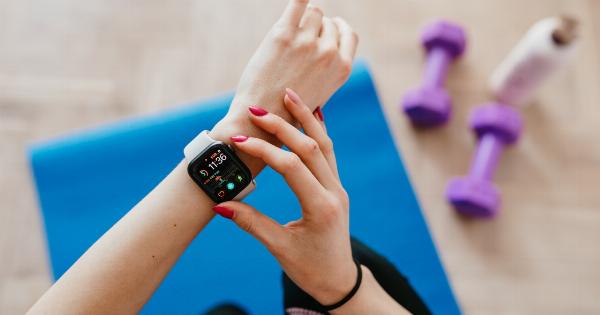Hugs are known to be one of the most universal forms of human communication. They have the power to express love, comfort, and support without the need for words.
Not only do hugs bring people closer emotionally, but they also offer numerous health benefits that can improve overall well-being. From enhancing relationships to reducing stress levels, the healing power of hugs is truly remarkable. In this article, we will delve into the science behind hugs and explore how they strengthen bonds and connections.
The Science behind Hugs
When we hug someone, our bodies release a hormone known as oxytocin, often referred to as the “love hormone” or “cuddle hormone.” Oxytocin is produced by the pituitary gland and plays a crucial role in social bonding.
It helps to create feelings of trust, empathy, and attachment between individuals. Research has shown that higher levels of oxytocin contribute to the formation and maintenance of healthy relationships.
Beyond oxytocin, hugs also stimulate the release of endorphins, which are natural painkillers and mood enhancers. Endorphins relieve stress and promote a sense of well-being, leaving you feeling happier and more relaxed after a warm embrace.
A hug can have a powerful impact on both our physical and emotional state, helping us to unwind and connect with others on a deeper level.
Strengthening Emotional Bonds
Hugs are an essential element in building and strengthening emotional bonds between individuals. Whether it’s between romantic partners, family members, or friends, physical touch is vital for maintaining healthy relationships.
Hugs provide a sense of security and reassurance, reminding us that we are not alone.
For couples, regular hugs can enhance intimacy and foster a deeper emotional connection. The physical touch involved in hugging releases a surge of oxytocin, which helps couples feel more bonded and attuned to one another.
Research has shown that higher levels of oxytocin in couples are associated with increased relationship satisfaction and longevity.
In families, hugs play a crucial role in creating a supportive and loving environment. Parents hugging their children not only provide comfort but also teach them the importance of physical affection and emotional closeness.
Siblings who embrace each other often develop stronger bonds and experience a greater sense of belonging within the family unit. The simple act of hugging has the power to solidify these connections and strengthen the emotional fabric of a family.
Even among friends, hugs can help create a stronger sense of camaraderie and support. When going through challenging times or celebrating milestones, embracing a friend can express empathy, understanding, and solidarity.
Hugs convey the message that you are there for each other, reinforcing the bond between friends and providing a safe space for vulnerability and emotional support.
Physical and Mental Health Benefits
The healing power of hugs extends beyond emotional bonds and connections. Hugs have been known to offer significant physical and mental health benefits that can positively impact overall well-being.
1. Reducing Stress: Hugging triggers the release of oxytocin, which helps reduce cortisol levels, the hormone responsible for stress. Lower stress levels contribute to improved cardiovascular health and lower blood pressure.
2. Boosting Immune System: The release of endorphins during a hug acts as a natural immune booster. Studies have shown that individuals who receive regular hugs have stronger immune systems and are less likely to develop illnesses.
3. Alleviating Pain: Endorphins released during hugs can also act as natural painkillers. Hugging has been found to reduce the perception of pain, making it a simple yet effective method for managing mild discomfort.
4. Enhancing Mood: Hugs stimulate the production of dopamine, a neurotransmitter associated with pleasure and happiness. Regular physical contact through hugs can improve mood and reduce symptoms of anxiety and depression.
5. Strengthening Heart Health: Hugging promotes the release of oxytocin, which can lead to lower heart rates and improved cardiovascular health. Lower heart rates reduce the risk of heart disease and support a healthier heart.
The Importance of Consent and Boundaries
While hugs offer numerous benefits, it is crucial to respect personal boundaries and obtain consent before embracing someone. Not everyone feels comfortable with physical touch, and it is important to consider individual preferences and cultural norms.
Always ask for consent or observe verbal and non-verbal cues before initiating a hug. Respecting personal boundaries fosters a culture of consent and ensures that the healing power of hugs is experienced positively by all involved.
Hugs in a Digital World
In today’s digital age, where virtual interactions dominate our daily lives, the significance of physical touch and hugs cannot be underestimated.
With social media and texting becoming the primary modes of communication, the absence of physical connection can leave us feeling isolated and disconnected.
However, there are still ways to integrate the healing power of hugs into our lives, even when physical proximity is not possible.
Sending virtual hugs, engaging in video calls where you can see and hear loved ones, or even hugging pillows or stuffed animals can provide a sense of comfort and connection. While they may not offer the same physical benefits as an actual hug, these gestures can still convey love and support in a digital world.
Conclusion
Hugs are more than just gestures; they are powerful tools for strengthening bonds, connections, and overall well-being. Whether between family, friends, or romantic partners, the healing power of hugs is unparalleled.
From the release of oxytocin and endorphins to the numerous physical and mental health benefits they offer, hugs have the ability to transform relationships and improve quality of life. So go ahead, embrace the healing power of hugs, and nurture the connections that bring joy, comfort, and love into your life.






























